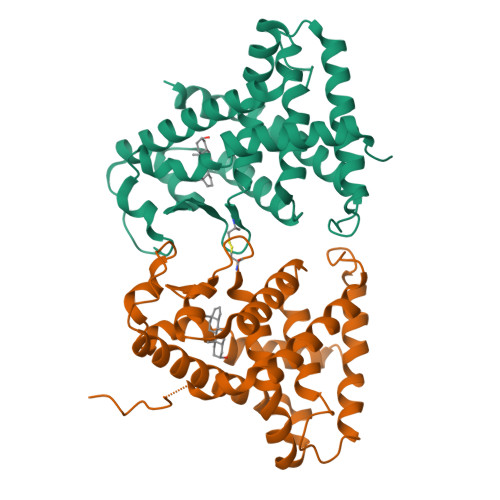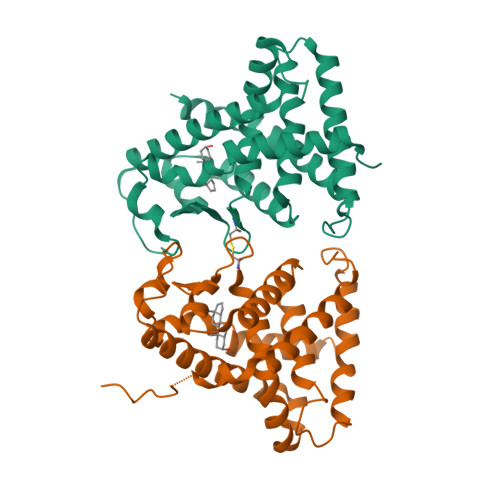Structure of the murine constitutive androstane receptor complexed to androstenol; a molecular basis for inverse agonism
Shan, L., Vincent, J., Brunzelle, J.S., Dussault, I., Lin, M., Ianculescu, I., Sherman, M.A., Forman, B.M., Fernandez, E.(2004) Mol Cell 16: 907-917
- PubMed: 15610734
- DOI: https://doi.org/10.1016/j.molcel.2004.11.037
- Primary Citation of Related Structures:
1XNX - PubMed Abstract:
The nuclear receptor CAR is a xenobiotic responsive transcription factor that plays a central role in the clearance of drugs and bilirubin while promoting cocaine and acetaminophen toxicity. In addition, CAR has established a "reverse" paradigm of nuclear receptor action where the receptor is active in the absence of ligand and inactive when bound to inverse agonists. We now report the crystal structure of murine CAR bound to the inverse agonist androstenol. Androstenol binds within the ligand binding pocket, but unlike many nuclear receptor ligands, it makes no contacts with helix H12/AF2. The transition from constitutive to basal activity (androstenol bound) appears to be associated with a ligand-induced kink between helices H10 and H11. This disrupts the previously predicted salt bridge that locks H12 in the transcriptionally active conformation. This mechanism of inverse agonism is distinct from traditional nuclear receptor antagonists thereby offering a new approach to receptor modulation.
Organizational Affiliation:
Biochemistry, Cellular and Molecular Biology, University of Tennessee, Knoxville, TN 37996, USA.



















